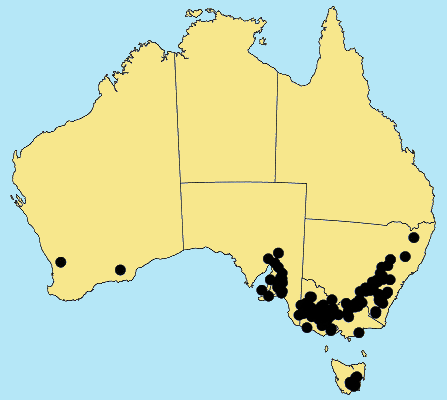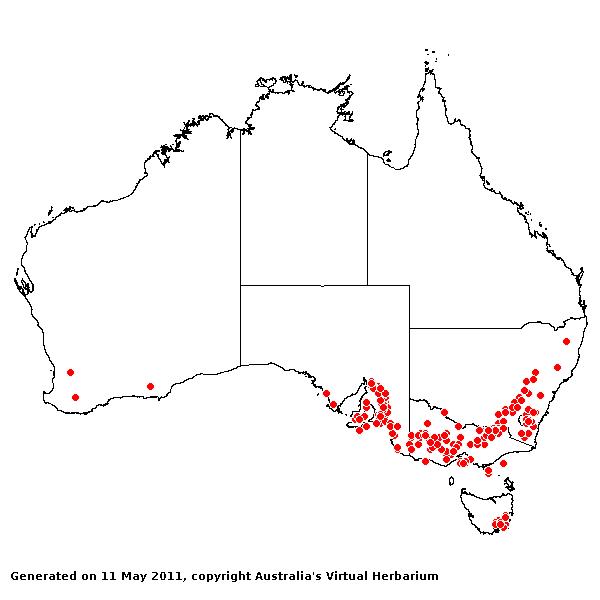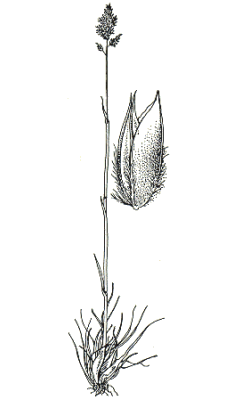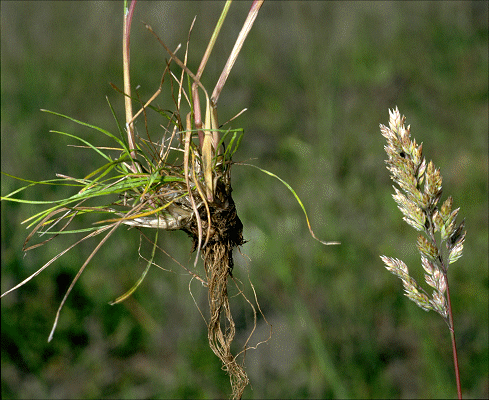Poa bulbosa* L. Sp. Pl. 70
(1753).
Classification. (GPWG 2001) : Subfamily Pooideae.
Tribe Poeae.
Type of Basionym or
Protologue Information: LT: Hasselquist s.n., (LINN-87.57). LT
designated by Meikle, Fl. Cyprus 2: 1742, but specific sheet not indicated;
specific sheet indicated by Soreng in Cafferty et al., Taxon 49(2): 255
(2000).
Key references
(books and floras): [1952] C.A.Gardner, Flora of Western Australia 1
Gramineae (107), [2002] D.Sharp & B.K.Simon, AusGrass, Grasses of
Australia, [2006] J.Jessop, G.R.M.Dashorst, F.M.James, Grasses of South
Australia (146), [2008] S.W.L.Jacobs, R.D.B.Walley & D.J.B.Wheeler, Grasses
of New South Wales (348), [2009] A.Wilson (ed.). Flora of Australia,
Vol 44A. Poaceae 2 (310).
Illustrations:
[2006] J.Jessop, G.R.M.Dashorst, F.M.James, Grasses of South Australia (146, Fig. 97as var. bulbosa), [2008]
S.W.L.Jacobs, R.D.B.Whalley & D.J.B.Wheeler, Grasses of New South Wales,
4th edn (348).
Habit.
Perennial. Culms erect or geniculately ascending, 5–45 cm tall, 2–4 -noded.
Mid-culm internodes glabrous. Lateral branches simple. Leaves mostly basal.
Leaf-sheaths smooth. Ligule an eciliate membrane, 1.5–6(–8) mm long, abaxially
glabrous or abaxially hairy, obtuse or acute or acuminate. Leaf-blades flat or
conduplicate, 1–11 cm long, 0.6–2.6 mm wide. Leaf-blade surface smooth, glabrous.
Inflorescence.
Inflorescence compound, a panicle. Panicle oblong or ovate, dense, 2–6 cm long,
1–2.5 cm wide.
Spikelets.
Spikelets pedicelled. Fertile spikelets many flowered, with at least 2 fertile
florets (3–6), comprising 3–6 fertile floret(s), with diminished florets at the
apex, oblong or ovate, laterally compressed, 3–5.5 mm long.
Glumes. Glumes
similar. Lower glume ovate, membranous, much thinner on margins, keeled,
1-keeled, 1–3 -nerved. Upper glume ovate, 2–3.8 mm long, membranous, keeled,
1-keeled, 3 -nerved.
Florets.
Fertile lemma 2.5–3.8 mm long, keeled, 5 -nerved. Lodicules present. Anthers 3.
Continental
Distribution: Europe, Africa, Temperate Asia, Tropical Asia, Australasia,
North America, and South America.
Australian
Distribution: Western Australia, South Australia, New South Wales,
Victoria, Tasmania.
Western Australia:
Roe, Avon. South Australia: Flinders Ranges, Eyre Peninsula, Northern
Lofty, Murray, Yorke Peninsula, Southern Lofty, Kangaroo Island, South-eastern.
New South Wales: Northern Tablelands, Central Tablelands, Southern
Tablelands, Central-Western Slopes, South-Western Slopes. Victoria:
Eastern Highlands, Gippsland Plain, Grampians, Midlands, Murray Mallee,
Riverina, Volcanic Plain, Wannon, Wimmera. Tasmania: Midlands, East Coast.
Notes.
Readily distinguished by the swollen, fleshy basal sheaths.
Introduced. Native to
the Mediterranean, now widespread. Commonly in dry, disturbed sites, e.g.
roadsides, wastelands or grasslands. Flowers Sept.-Feb. Fruits Nov.-?.




